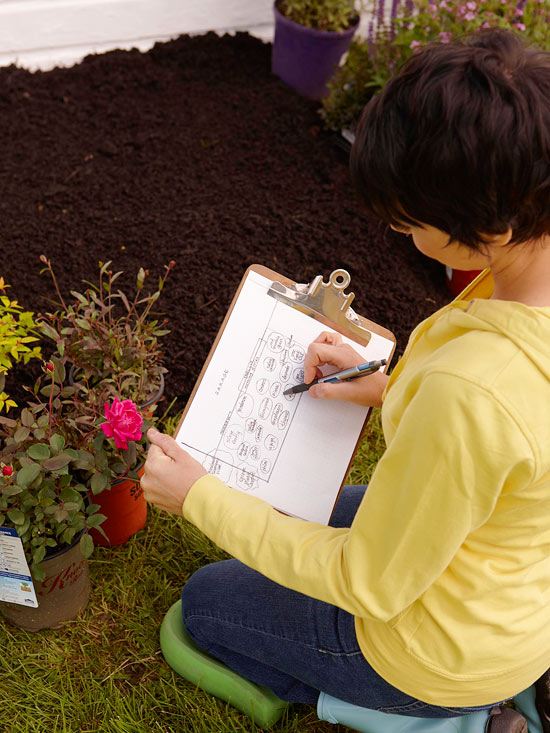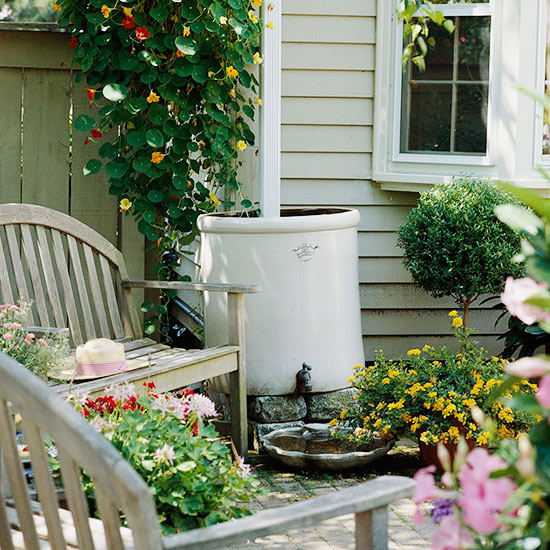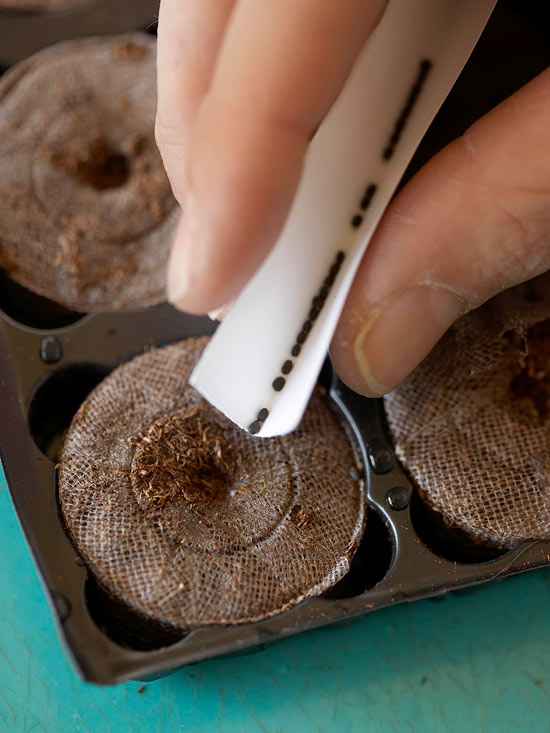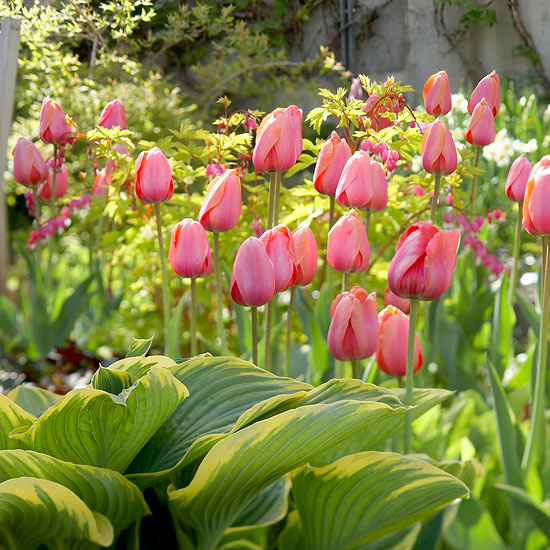






A common mistake many gardeners make is to dive into landscaping without having a plan -- which leads to plants that may not be a good fit for a particular site or landscaping features that don't work well in an overall scheme. How do you keep your landscape costs low and avoid that rookie mistake? Decide on a plan for your entire yard before you even pick up a trowel. If you're unsure what to do on your own, consider hiring a landscape designer. The upfront outlay of cash is likely to save money in the long run. In addition, if you have a plan, you'll avoid impulse purchases that might not make the most sense for your garden.
Cut costs by building your own outdoor water feature.
Do you have a friend or family member that likes to garden? If so, ask them if they'd like to buy garden and landscape materials in bulk and split the expense. When compared to bagged materials, a truckload of compost, topsoil, mulch, sand, or gravel is much less expensive. Plus, you'll save even more if you haul it yourself.

How do you keep your landscape costs low if you have to irrigate? A rain barrel is a practical, economical -- and free -- way to help with landscape water needs. Position a rain barrel under a downspout to catch as much water as you can, and hook it up to a hose to fill watering cans. To save even more, make your own rain barrel by refashioning a heavy-duty garbage can; use a window screen to keep out mosquitoes.
Looking for fresh ideas on how to keep your landscape costs low? Consider making your own compost with leaves, kitchen scraps, and other plant debris. Once you have a good amount of homemade compost, spread a 2-inch layer between plants each spring and fall to preserve soil moisture, deter weeds, and enhance the soil.
Learn more about composting.
How do you keep your landscape costs low with plants? Turn to varieties that don't hog water, which in turn will decrease your monthly water bill. Use drought-tolerant beauties such as sedum, barberry, butterfly bush, lilac, rosemary, viburnum, and hens-and-chicks to keep supplemental watering needs low.
If you've visited a garden center or nursery and looked at all the plants, you've probably asked yourself how to keep landscape costs low and still purchase what you need. Plants in large containers, particularly trees and shrubs, can be expensive; instead, purchase the smaller versions, which cost less and, if well tended, will grow just as quickly.

To keep landscape costs low, start your own seeds in the spring and collect seedpods in the fall to save for the following year. For an earlier start, plant seeds in plastic flats before spring and harden off outside as the weather warms. Or, just sow them in the garden after the soil warms in spring. In fall, collect seedpods or seed heads when hard and dry but before they break, and extract the seeds; dry for a week on paper and store in glass jars in a cool, dry place. Make sure to label everything. Good candidates for seed saving include painted sage, poppies, zinnias, hollyhocks, cosmos, scarlet runner beans, morning glories, and cathedral bells.
Learn more about seed starting.
Learn more about saving your own seeds.
Beautiful bloomers such as cannas and dahlias can also be pricey. How do you lower your landscape costs and still enjoy these stunning plants? Instead of buying new bulbs each year, plant yours in containers; when autumn comes, move the pot (and bulb) indoors to a cool storage spot such as the basement. Move them back outside once spring comes.
Learn more about summer bulbs.
Learn more about saving tender bulbs.
How do you keep your landscape costs low when you have hardscape projects to complete? Go for salvaged bricks, which are often much less expensive than new, and come with character and charm. Look at salvage yards and building and remodeling sites, and compare prices.
Sometimes items such as furniture, shelves, and containers can be had for a fraction of the price at tag and garage sales as well as secondhand or architectural salvage stores. Try to find items that can easily be updated with a coat of paint or a good cleaning.
Learn more about salvaged landscape materials.

If you love specimen plants, such as roses, how do you keep landscape costs low and include them in your planting scheme? Concentrate your landscaping dollars on just a few and use them as a focal point. Try a small grouping of roses, dahlias, lilies, orchids, or tropicals (if climate allows).
Many plants, such as daylilies and hostas -- as well as groundcovers including vinca, pachysandra, and ajuga -- spread quickly, saving you the cost of buying more plants. They are good choices to fill empty spots under trees and shrubs.
See some of the top easy groundcovers.
Many communities use garden waste to make a no- or low-cost mulch that's available for the taking for residents. Call your city's municipal department for details.
Bare-root trees and shrubs -- suitable for spring planting -- can cost half as much as container plants.
You may think that saving money means you can't plant what you want. How do you keep landscape costs low if you have an irrepressible urge to plant this year? Skip the busy spring and summer seasons, when every other gardener is rushing to the garden center to buy full-price plants. Instead, go in midsummer when perennials are a fraction of their full cost. If you take good care of them the first year, those plants will bloom just as well.
Copyright © www.100flowers.win Botanic Garden All Rights Reserved